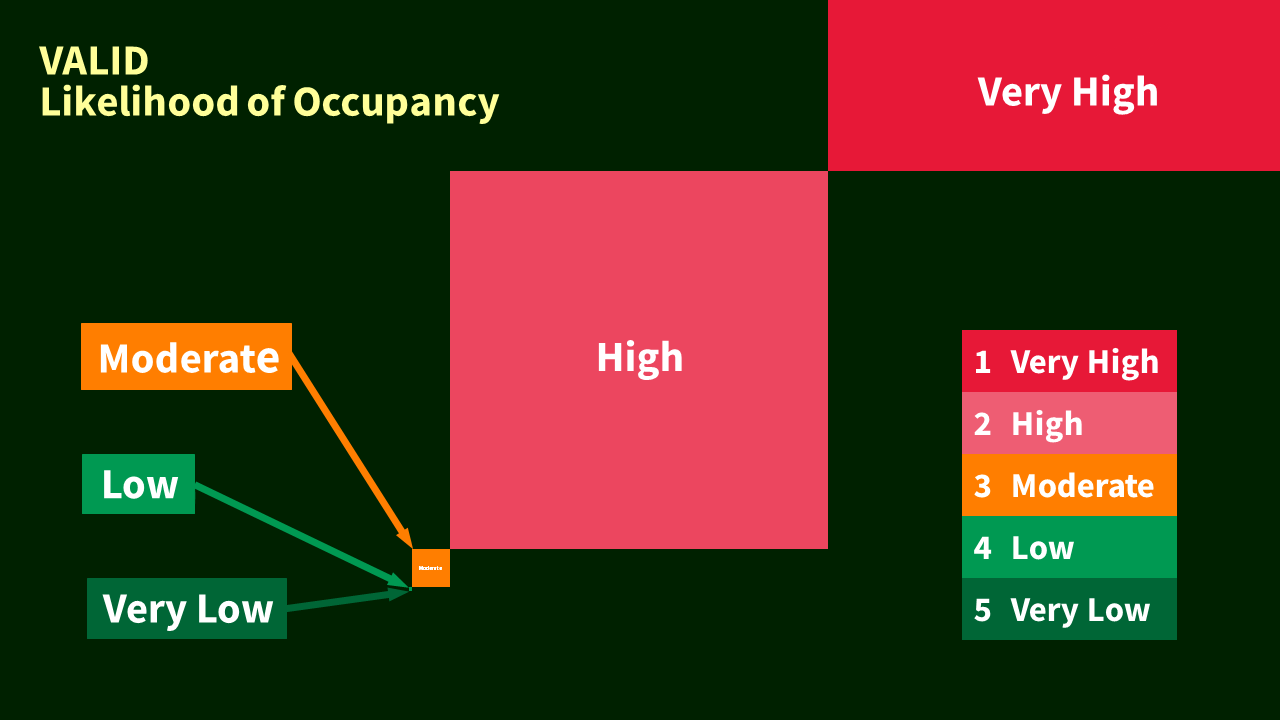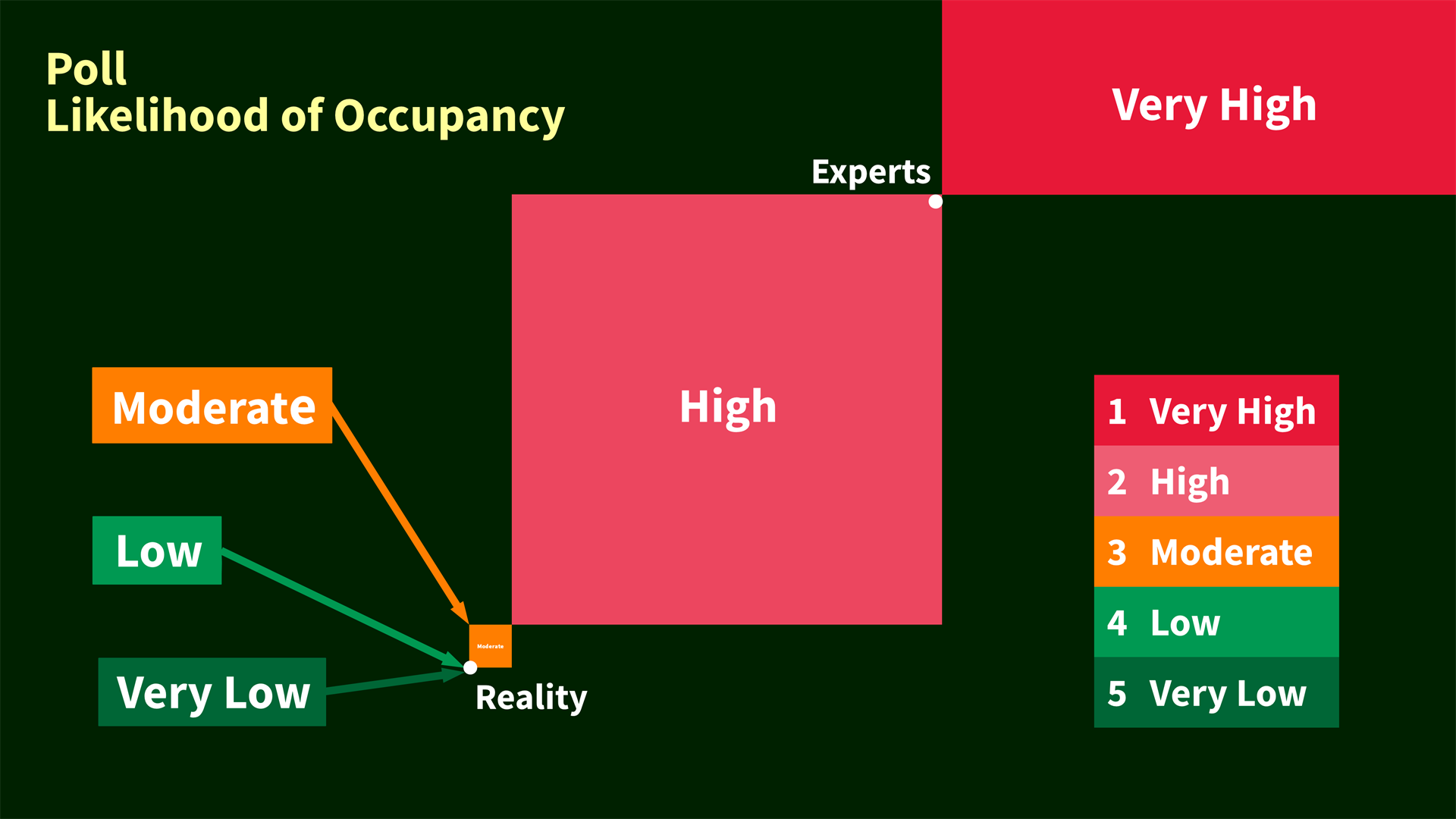In the previous post we looked at VALID's Goldilocks Likelihood of Occupancy canvases to explore categories that are not too wide, and not too narrow, that are just right.
These Likelihood of Occupancy canvases are helpful when we look at tree risk management and assessment decision-making in the UK’s landmark Poll v Bartholomew Judgment.

In Poll, a motorcyclist was seriously injured by a falling Ash stem. The Judge found for the Claimant because the experts said the tree was ‘High Risk.’
In their reports, the Claimant’s expert said the tree was ‘High Risk’. The Defendant’s expert didn’t mention any level risk. Yet in their Joint Statement, the experts agreed the tree was a ‘Medium Risk.’
Naturally, the experts' opinions left the court scratching its head. The court had to ask them to produce a Second Joint Statement to define what they meant by High, Medium, and Low Risk, and what risk the tree posed.
In the Second Joint Statement, the experts told the court the tree was ‘High Risk’. However, they concluded the risk was high after they'd assessed the Likelihood of Occupancy for a minor country road at 50%, when in fact it was 1%. The experts overvalued the occupancy by a whopping factor of 50. This gaffe was so enormous the tree was in fact a ‘Medium Risk’ and not a ‘High Risk.’
The Judge would’ve found for the Defendant, not the Claimant, if the tree was a ‘Medium Risk.’


.png)